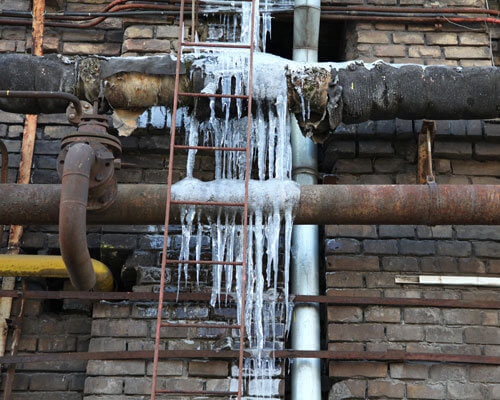Avoiding Frozen Plumbing in Winter: Essential Tips
Avoiding Frozen Plumbing in Winter: Essential Tips
Blog Article
Here on the next paragraphs you might get a good deal of good quality news involving How to Prevent Your Pipes From Freezing.
:strip_icc()/snow-outdoor-faucet-pipes-4af65d1e5e904fb1aa7bf74071fe5d89.jpg)
Cold weather can ruin your pipes, particularly by freezing pipes. Right here's just how to stop it from happening and what to do if it does.
Introduction
As temperatures decrease, the threat of icy pipes rises, possibly leading to costly repair services and water damages. Comprehending exactly how to stop frozen pipes is critical for homeowners in chilly environments.
Avoidance Tips
Shielding vulnerable pipes
Cover pipes in insulation sleeves or utilize warmth tape to shield them from freezing temperature levels. Focus on pipelines in unheated or exterior locations of the home.
Heating strategies
Maintain indoor areas effectively warmed, especially areas with plumbing. Open cupboard doors to enable cozy air to circulate around pipes under sinks.
How to recognize icy pipes
Look for lowered water flow from faucets, uncommon odors or sounds from pipes, and noticeable frost on exposed pipes.
Long-Term Solutions
Architectural changes
Think about rerouting pipes far from outside wall surfaces or unheated locations. Include extra insulation to attics, cellars, and crawl spaces.
Updating insulation
Buy top notch insulation for pipes, attic rooms, and wall surfaces. Proper insulation aids preserve consistent temperature levels and minimizes the risk of icy pipes.
Shielding Outside Pipes
Garden tubes and outside taps
Disconnect and drain pipes garden pipes prior to winter season. Mount frost-proof spigots or cover outdoor faucets with protected caps.
Recognizing Icy Pipelines
What triggers pipelines to ice up?
Pipelines ice up when exposed to temperatures below 32 ° F (0 ° C) for prolonged periods. As water inside the pipes freezes, it broadens, putting pressure on the pipe walls and potentially causing them to burst.
Risks and problems
Icy pipelines can cause water disturbances, property damages, and costly repair services. Burst pipes can flooding homes and trigger comprehensive structural damage.
Signs of Frozen Pipes
Recognizing frozen pipelines early can stop them from bursting.
What to Do If Your Pipelines Freeze
Immediate activities to take
If you presume frozen pipelines, keep taps open to soothe stress as the ice melts. Utilize a hairdryer or towels soaked in warm water to thaw pipelines gradually.
Final thought
Preventing icy pipelines needs proactive measures and fast reactions. By understanding the reasons, signs, and safety nets, property owners can safeguard their pipes during cold weather.
5 Ways to Prevent Frozen Pipes
Drain Outdoor Faucets and Disconnect Hoses
First, close the shut-off valve that controls the flow of water in the pipe to your outdoor faucet. Then, head outside to disconnect and drain your hose and open the outdoor faucet to allow the water to completely drain out of the line. Turn off the faucet when done. Finally, head back to the shut-off valve and drain the remaining water inside the pipe into a bucket or container. Additionally, if you have a home irrigation system, you should consider hiring an expert to clear the system of water each year.
Insulate Pipes
One of the best and most cost-effective methods for preventing frozen water pipes is to wrap your pipes with insulation. This is especially important for areas in your home that aren’t exposed to heat, such as an attic. We suggest using foam sleeves, which can typically be found at your local hardware store.
Keep Heat Running at 65
Your pipes are located inside your walls, and the temperature there is much colder than the rest of the house. To prevent your pipes from freezing, The Insurance Information Institute suggests that you keep your home heated to at least 65 degrees, even when traveling. You may want to invest in smart devices that can keep an eye on the temperature in your home while you’re away.
Leave Water Dripping
Moving water — even a small trickle — can prevent ice from forming inside your pipes. When freezing temps are imminent, start a drip of water from all faucets that serve exposed pipes. Leaving a few faucets running will also help relieve pressure inside the pipes and help prevent a rupture if the water inside freezes.
Open Cupboard Doors
Warm your kitchen and bathroom pipes by opening cupboards and vanities. You should also leave your interior doors ajar to help warm air circulate evenly throughout your home.

We were introduced to that report about 6 Ways to Prevent Frozen Pipes from an acquaintance on our other web property. Sharing is caring. One never knows, you could be helping someone out. Thanks so much for your time spent reading it.
Visit Our Site Report this page